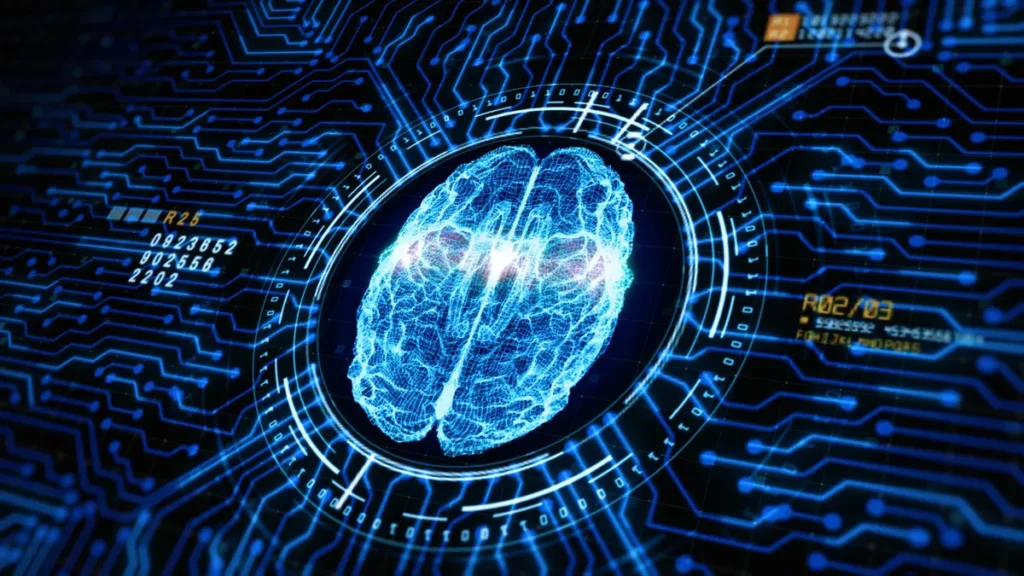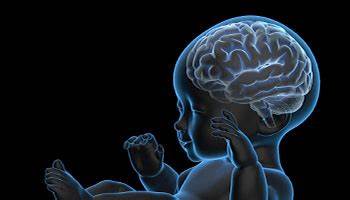New findings have demonstrated that an infant’s brain is significantly more mature than was previously assumed. Far from being completely immature, babies utilize their early postnatal period of ‘helplessness’ to construct leading cognitive models much the same as those used to accommodate generative Artificial Intelligence.
A Trinity College Dublin neuroscientist now offers the first challenge to the decades-long explanation for infant helplessness, using modern brain data, published November in the journal Trends in Cognitive Sciences.
Contrasting Human and Animal Development
Human infants are notoriously helpless for a long time after birth compared with many other mammals and birds that begin walking on the day of their birth. This extended period of helplessness increases risk for infants and puts a burden on parents, yet it has persisted due to high selection pressure.
Insights from Cross-Species Study
“The thinking at the time was that, since the 1960s, scientists have thought that the helplessness of human babies is caused by constraints of birth. Due to the large heads, human babies must be born early; their brains would thus be rather immature, which would then extend this period of helpless time up to one year,” explains Professor Rhodri Cusack of Cognitive Neuroscience and lead author of the study.
In this comparative study, the research team had to include Prof. Cusack, working on neuroimaging studying infant brain development; Prof Christine Charvet of Auburn University in the USA—who has worked on the comparative brain development of different species; and Dr. Marc’Aurelio Ranzato from DeepMind, a senior researcher in AI.
“Our study drew from the Translating Time project, which equates ages across species, to determine the human brain is more mature at birth than those of many other species,” added Prof. Charvet.
Using brain imaging, the researchers show that many systems in the human infant brain are already at work and able to process sensory information. This means that the notion that further development is needed to improve the operation of infant brain systems is fundamentally wrong.
Comparing Human Learning to AI Models
The team went on to make a comparison of human learning with the most recent machine learning models, whereby it has been observed that deep neural networks benefit from a ‘helpless’ period of pre-training.
Previously, AI models were trained to do something—like in self-driving cars, to identify objects on the road. Today’s models are first pretrained to learn general patterns in large data sets, and then tuned to particular problems. This pretraining allows for faster learning and higher performance on downstream tasks.
Future Implications for the Development of AI
“We now propose that human infants equally exploit this period of infancy, being ‘helpless’ time, to pre-train and develop powerful foundational models flexibly supporting high cognitive performance and rapid generalization later in life,” stated Prof. Cusack. “This process is analogous to the machine learning models driving the incredible recent achievements of AI witnessed in OpenAI’s ChatGPT or Google’s Gemini.”
The researchers say future research into how babies learn could be what powers the next generation of AI models.
“Although AI has made huge advances, the foundation models developed so far use enormous amounts of energy and are trained on vast more data than any human baby. We need to understand how babies do it so much more efficiently. Future work should directly compare models of the learning with human brain procedures on AI systems” said Prof. Cusack.
Broader Implications for Early Childhood Development
It holds broader implications for early childhood education and how children are parented. If the brain of infants in the first months is spending its time constructing sophisticated cognitive frameworks, then the environments they are exposed to in this period should be of extreme importance. Richly stimulating environments would help to optimize the development of these foundational models at the very beginning, setting the stage for lifelong learning and adaptation.
In particular, this research underscores the role of supportive and responsive caregiving. Parents and caregivers who are receptive to infants’ cues, and who provide warm and stimulating environments, can have a dramatizing effect on their child’s cognitive and socio-emotional development. Thus, policies and programs aimed at supporting families—with a special emphasis on the early years of life—will set all children on course to realize their full potential.
Educational Practices and Policies
This research may also have implications for education practices and policies. For example, early childhood education might include activities designed to build sensory exploration and emotional bonding, as it would recognize its importance in cognitive development. Teachers can be trained in providing stimulus to the setting of learning that attracts infants’ senses and builds emotional ties that are foundational to later learning.
These findings also illustrate that policymakers could seriously consider advocating increasing support of early childhood education and leave policies. Ensuring that parents have the resources and time to engage with their infants during this critical period invests communities in cognitive and emotional development for future generations. Programs to educate parents on the importance of early sensory experiences and responsive caregiving could be pivotal in the optimization of child development outcomes.
Future Research Directions

In the future, the investigation opened many exciting directions. For example, one can investigate which kinds of experiences or interactions more strongly drive development for these core cognitive models. Again, further cross-species comparisons will reveal the specialcase features of human brain development and how evolution has made its imprint on it.
Another critical area in the future is the direct comparison of learning processes in the human brain and AI. By understanding how that works, and how it differs, researchers will be able to come up with more advanced and, likewise, efficient AI models inspired by superb learning capabilities of human infants. This may be a key interdisciplinary avenue toward important improvements in both neuroscience and artificial intelligence, and thus benefiting a wide range of applications from education to technology development.
This might further explore how such early sensory and emotional experiences could have impinged on later cognitive and emotional development. Prospective longitudinal studies of children from birth into adulthood could provide data on just how sensitively early brain development interacts with lifelong learning, emotional regulation, and social skills. The insights could then be used in informing interventions and educational practices that help further support optimal development throughout life.
Conclusion
One can now approach infant helplessness with an added layer of perception. The appreciation of the sophistication of early cognitive development in an infant appreciates the need for refined early sensory and emotional experiences. Such new understanding informs novel practices in parenting and early childhood education and further inspires innovative approaches toward artificial intelligence development. Looking ahead, the more that is learned about the intersections between human brain development and AI, the more we can look forward to a future in which these two fields continue to influence one another, drawing us ever closer to effective learning strategies and smarter technologies.

